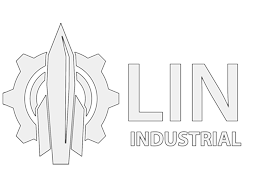Injector tests started
In December 2015, tests started for the injectors of our liquid-propellant rocket engine with thrust of 100 kgf. Early hydrotests (flow tests) of the injectors were held in Moscow Aviation Institute (MAI).


Spray of liquid out of injectors (MAI)
Injector is essentially a metal part with a channel of special shape. At the upper end of injector a fuel intake occurs under pressure, while at the lower end it is injected into combustion chamber — ideally as a uniform cone. If the spray differs from the conical shape, and droplets of the cone are not fine but coarse, then the combustion in chamber will be unstable and incomplete.
The quality of spray depends on the injector shape (developed at the Department 202 "Rocket Engines" of MAI) and on the manufacturing quality. Unfortunately, many metalworking companies can not provide the necessary quality and stability of parts specifications while meeting the deadlines. So we have to parallelize the manufacturing of injectors across multiple contractors. That's why one of the goals of the hydrotests is not just checking how well the manufactured injectors meet given specifications, but also to identify a set of injectors with similar specifications. Our engine needs 7 injectors for kerosene. Besides, the engine has a catalyst package, which decomposes the hydrogen peroxide into water and oxygen, and has injectors for gaseous oxygen downstream, but more on that later.
To speed up the process of testing, on the New Year eve we assembled our own test stand in the office, for flow tests of injectors with low flow rate (up to 50 ml/sec).
The stand consists of tank for test fluid (water), high pressure cylinder with compressed nitrogen, flow meter, injector support, multisectoral collector for test fluid, electric pump for filling the tank with test fluid and refill reservoir with test fluid reserve.
Gross mass of the stand — up to 100 kg.
Maximum pressure in hydraulic path — up to 8 bar.
Maximum volume of consumed test fluid — 20 liters.
Maximum volumetric flow rate for test fluid — 50 ml/sec.
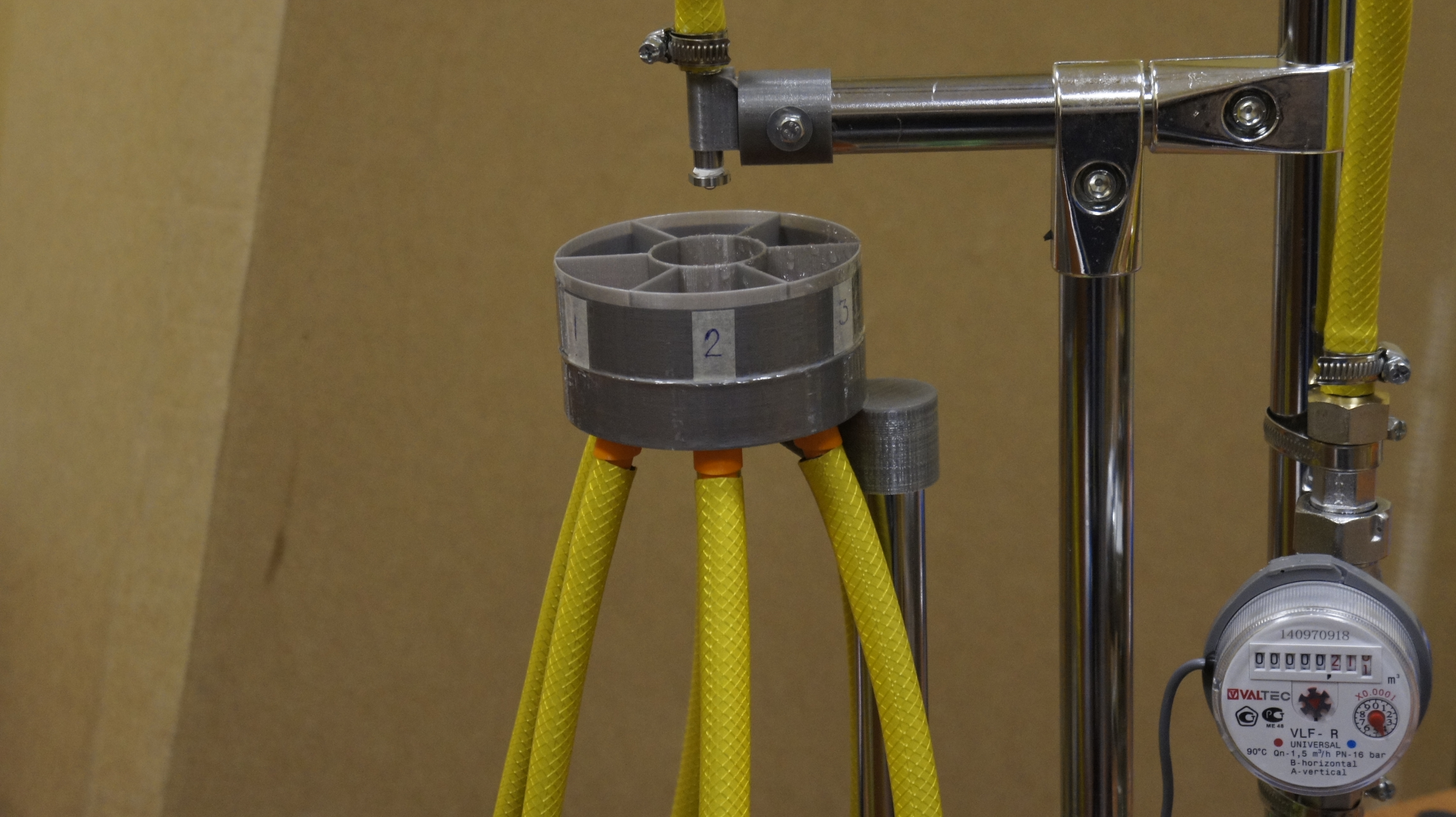
Injector (top center), collector (under the injector) and flow meter (right)
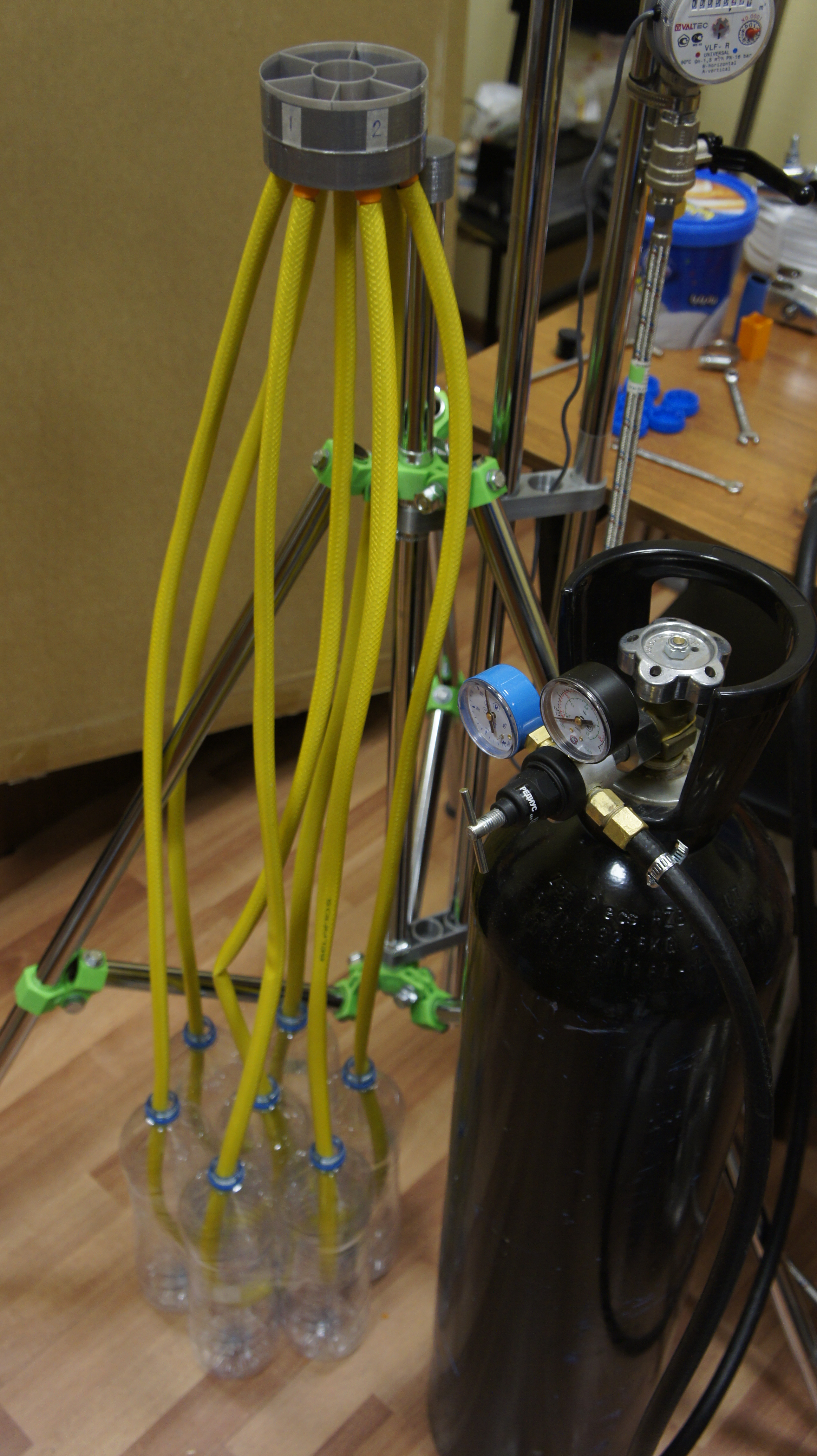
Water collector with yellow hoses, bottles for test fluid collection, high pressure cylinder (right)
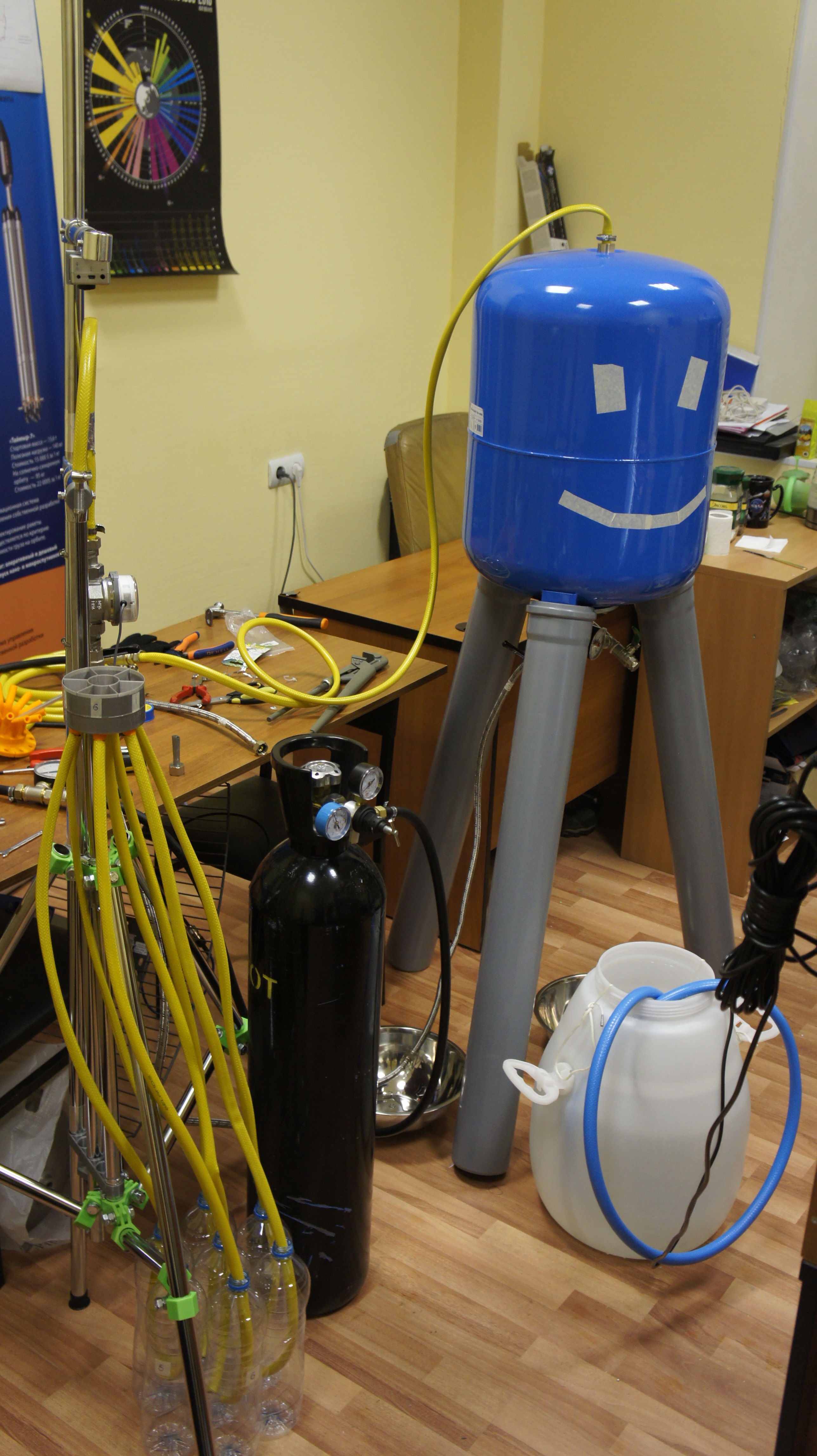
The assembly fits even inside the small office: nitrogen flows from the black high pressure cylinder into the blue tank containing water, and forces the water through the flow meter and then injector into the collector. Finally the water gets into the bottles from the hoses.
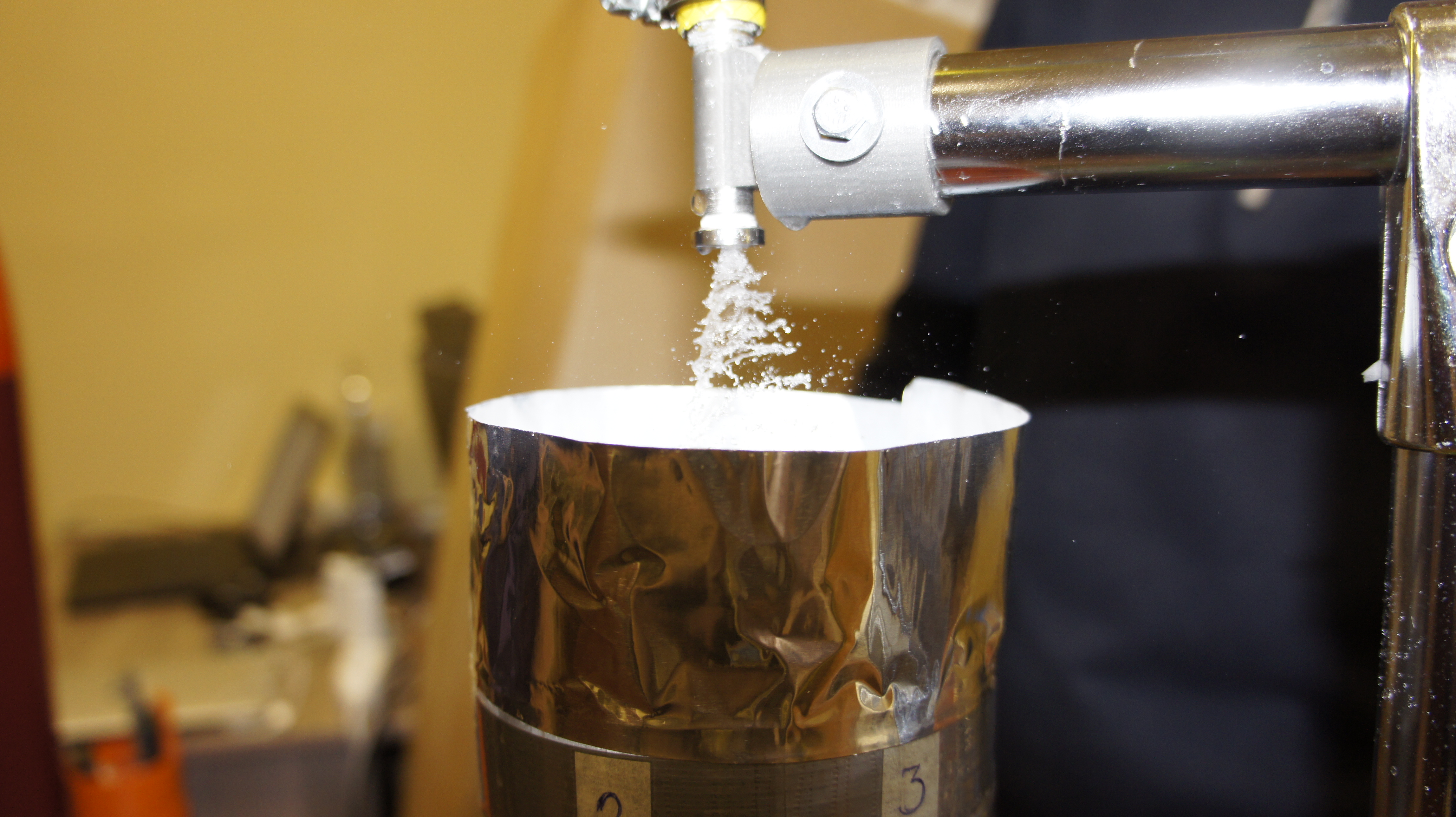
Spray cone of an injector on the test stand at Lin Industrial office.
It remains to add that instead of kerosene flowing inside real engine, water is used for flow tests of injectors.
After concluding the hydrotests of injectors, similar tests will be carried out for curtain layer, followed by the engine assembly and mounting for static fire tests.
The work goes on!
